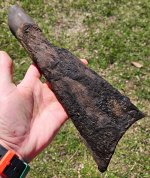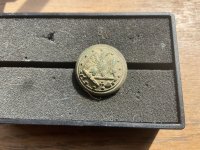Dragonasia
Full Member
We are at 85 ft and about 40 to go for water.
The first pic is of some of the cement layers we have encountered.
Then looking down at the hole and seeing taclobo. Where that is, is at 12 ft, inside what seems like an opening made marble. Very very hard. The marble is Only on that side. It measure 13 feet by 5 ft wide ( or more). Our hole was 5 by 5.
We decided to dig into the marble and that’s when we found the shell inside the top of where the marble started. Then you can see where part of the marble curved up to and across the hole but we dug straight down through. We have found other less hard marble type walls directly opposite of the 1st one. We found and x in the wall, dug into the wall and found more marble type cement. At 60 ft found an across the hole even 1ft layer of goldish red clay. We have found shells at about every 3 to 4 ft. Have moist sand now (85 ft). Last of the sand was red colored.
It will interesting to see what else we find before the water.
Doug
The first pic is of some of the cement layers we have encountered.
Then looking down at the hole and seeing taclobo. Where that is, is at 12 ft, inside what seems like an opening made marble. Very very hard. The marble is Only on that side. It measure 13 feet by 5 ft wide ( or more). Our hole was 5 by 5.
We decided to dig into the marble and that’s when we found the shell inside the top of where the marble started. Then you can see where part of the marble curved up to and across the hole but we dug straight down through. We have found other less hard marble type walls directly opposite of the 1st one. We found and x in the wall, dug into the wall and found more marble type cement. At 60 ft found an across the hole even 1ft layer of goldish red clay. We have found shells at about every 3 to 4 ft. Have moist sand now (85 ft). Last of the sand was red colored.
It will interesting to see what else we find before the water.
Doug




